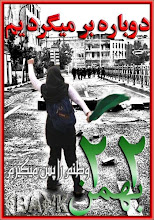












Cabbages and Quilts: The Wootton Flower and Produce Show, 2008.
Ra tatataaaaaa, drum rolllllll, ratatat, dum diddle dum diddle dum dum dum. Intermittent strains of brass band music twirl around tents and idling teenagers, village elders and passing visitors, all of whom milled about the glistening green lawns and drifted in and out of immaculate white tents at this year’s village flower show. If ever there was an act of faith, a testament to optimism it was this. A rain drenched, wind swept, dripping cold August had put aside one fine day, Saturday 30th, for Wootton’s annual extravaganza of cabbages and cakes. Apples and preserves, cable knitted cardies, quilts and roses, all expertly assembled, jostled for position on their tables, and were justly, or unjustly, rewarded. An incident over the gladioli was duly calmed, the wasps sought refuge in the prize-winning cake, and everyone delighted in the glorious sunshine which bathed the tents and lawns and gardens all day.
So here it is, an authentic village flower show, which, as far as I can see, is still pretty much as it was 40 years ago, when I won first prize for a painting, aged 6. No one’s gone out of their way to insist in its unchanging state. It just hasn’t changed. Of course the people have. I’ve drifted off to London and the village has been almost entirely repopulated but the flower show still has runners and beets and marrows and carrots and ‘garden on a plate’. My niece made a mangrove swamp one year. She’s still feeling misunderstood because she didn’t win a prize. She’s 21 now. The ‘home craft’ is still astounding. It doesn’t seem even slightly naff to me, not in this context. It’s quite at home here. The exquisite smocking is for someone’s new baby, the tea cosies are for teapots, the quilts for someone’s bed, the knitted cardies will be worn, the wooden toys played with. I know, it all sounds too idyllic, but it is true. I don’t quite know how it is that people have the time, but the work is here to prove it. They’re not trying to make a living from it, which helps, but it’s all made for a purpose.
This should not be mistaken for ‘rural’ craft. Certainly Wootton is a village and is in ‘the country’. It is, however, a suburb in character, but one that is detached. It is one of the wealthiest areas in England now and its economy is entirely urban. No one goes to work in the village. Everyone who lives there works in neighbouring cities. The place is deserted during the day, apart from the school – ah ha, so there are teachers who work in Wootton, and as very small number of people who come to clean houses and maintain gardens. So Wootton flower and produce show is a product of urban – not always wealth, but stable income - combined with a mixture of creative domestic activity, good gardeners, - and these are the ones cared for by the owners, not paid gardeners, - and an industrious spirit – oh and a touch of neighbourly competitiveness. Tottenham flower and prod show would be very similar. There are enough people with a stable income to fund the creative domestic activity, a wealth of domestic skill, and we even have the ‘country’ house, - Bruce Castle – which can compete with any in the land – and we have the 400 year old oak trees. It would just be a more multi-cultural that’s all.
As to craft, village craft vs. gallery craft, well – craft it seems becomes a problem requiring scrutiny, only when it departs from the flower show and from that use/comfort/decoration mix to something that either questions itself and what it’s doing in an industrialised society or when it is used as a medium to explore ideas which are part of its habitus, probably, but not part of it usual or original social role.
This seems like a good place to leave this post which serves, I think, as a good introduction to the next series of posts which will talk about Ceramics in the City, Origin and so forth, as well as a fond farewell to the summer holiday – such as it was.


































































